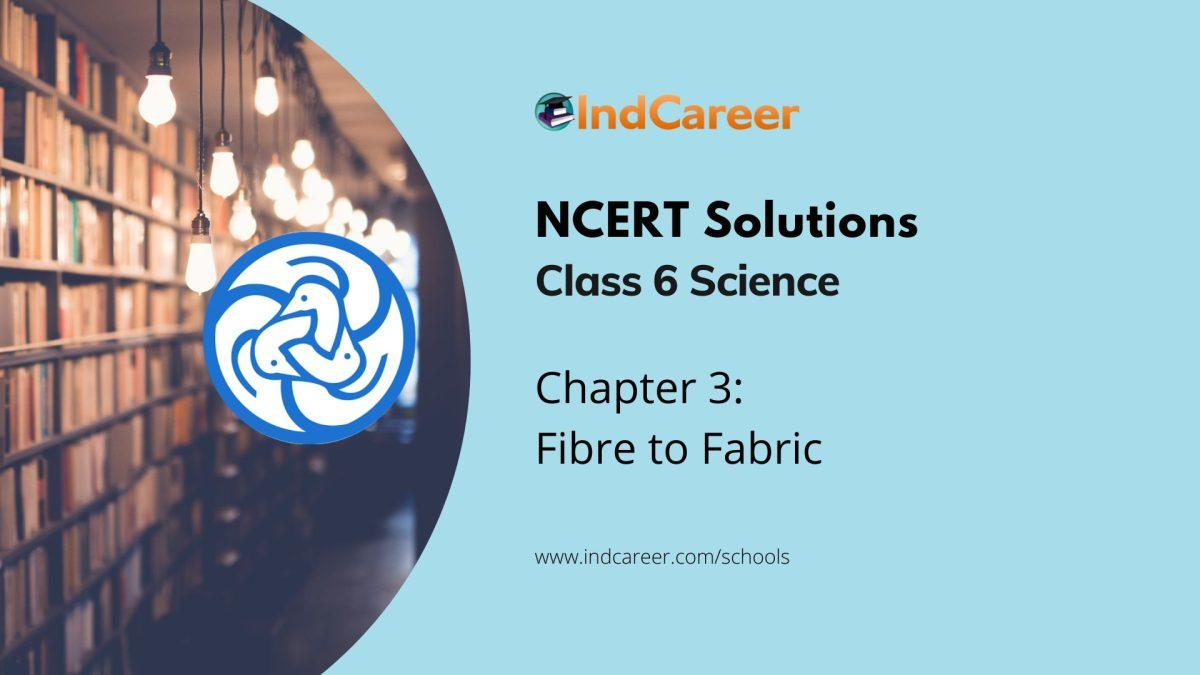Class 6: Science Chapter 3 solutions. Complete Class 6 Science Chapter 3 Notes.
Contents
NCERT Solutions for 6th Class Science: Chapter 3-Fibre to Fabric
NCERT 6th Science Chapter 3, class 6 Science Chapter 3 solutions
1. Classify the following fibers as natural or synthetic:
nylon, wool, cotton, silk, polyester, jute
Answer
Natural: Wool, Cotton, Silk, Jute
Synthetic: Nylon, Polyester
2. State whether the following statements are true or false:
a) Yarn is made from fibers.
b) Spinning is a process of making fibers.
c) Jute is the outer covering of coconut.
d) The process of removing seed from cotton is called ginning.
e) The weaving of yarn makes a piece of fabric.
f) The silk fiber is obtained from the stem of a plant.
g) Polyester is a natural fiber.
Answer
- True
- False
- False
- True
- True
- False
- False
3. Fill in the blanks:
a) Plant fibers are obtained from_________ and ________ .
b) Animals fibers are __________ and ___________ .
Answer
a) Plant fibers are obtained from cotton and jute.
b) Animals fibers are silk and wool.
4. From which parts of the plant cotton and jute are obtained?
Answer
Cotton is obtained from the fruit part of plant and Jute is obtained from the stem of the plant.
5. Name two items that are made from coconut fiber.
Answer
Gunny bags and Rope
6. Explain the process of making yarn from fiber.
Answer
Yarn can be made from fiber by the process called Spinning. From the mass of cotton, fibers are drawn and twisted which brings together the fibers to form a yarn
NCERT Solutions for 6th Class Science: Chapter 3: Download PDF
NCERT Solutions for 6th Class Science: Chapter 3-Fibre to Fabric
Download PDF: NCERT Solutions for 6th Class Science: Chapter 3-Fibre to Fabric PDF
Chapterwise NCERT Solutions for Class 6 Science :
- Chapter 1 Food: Where Does It Come From?
- Chapter 2 Components of Food
- Chapter 3 Fibre to Fabric
- Chapter 4 Sorting Materials Into Groups
- Chapter 5 Separation of Substances
- Chapter 6 Changes Around Us
- Chapter 7 Getting to Know Plants
- Chapter 8 Body Movements
- Chapter 9 The Living Organisms and Their Surroundings
- Chapter 10 Motion and Measurement of Distances
- Chapter 11 Light, Shadows and Reflection
- Chapter 12 Electricity and Circuits
- Chapter 13 Fun with Magnets
- Chapter 14 Water
- Chapter 15 Air Around Us
- Chapter 16 Garbage In, Garbage Out
About NCERT
The National Council of Educational Research and Training is an autonomous organization of the Government of India which was established in 1961 as a literary, scientific, and charitable Society under the Societies Registration Act. Its headquarters are located at Sri Aurbindo Marg in New Delhi. Visit the Official NCERT website to learn more.
